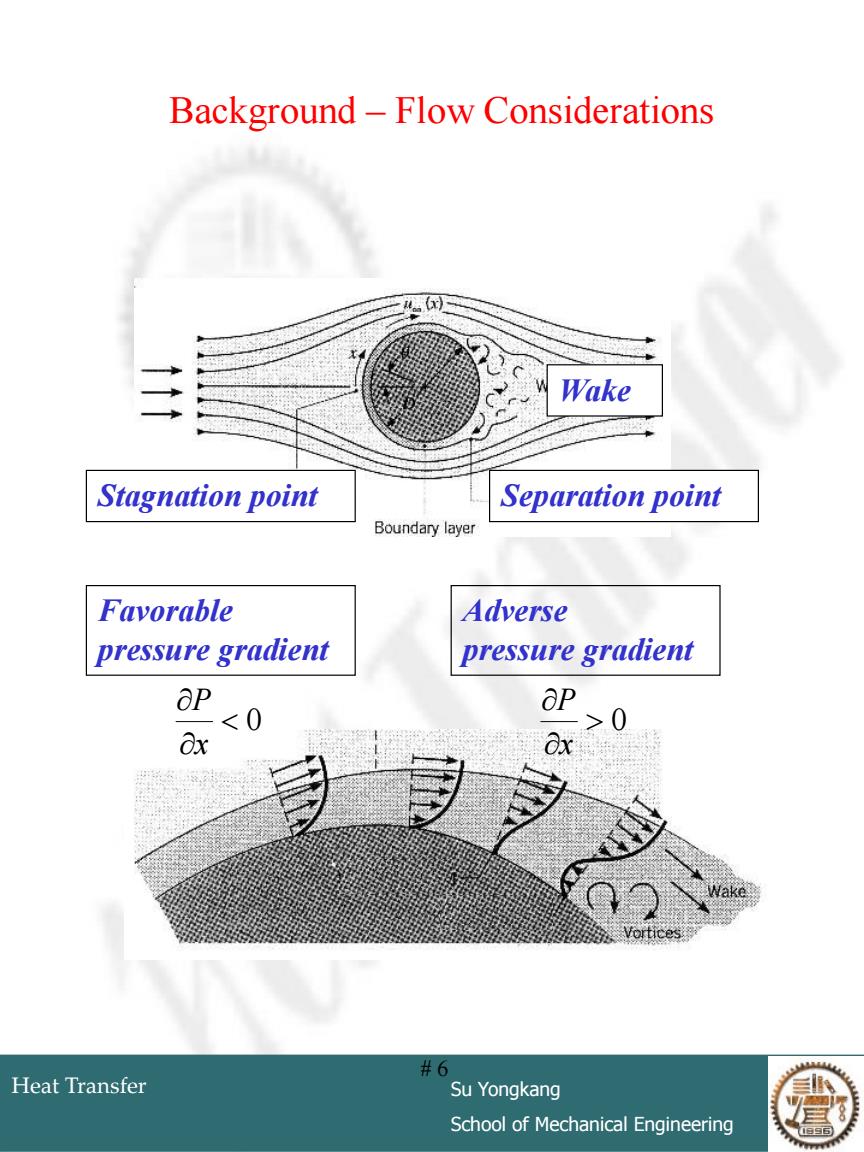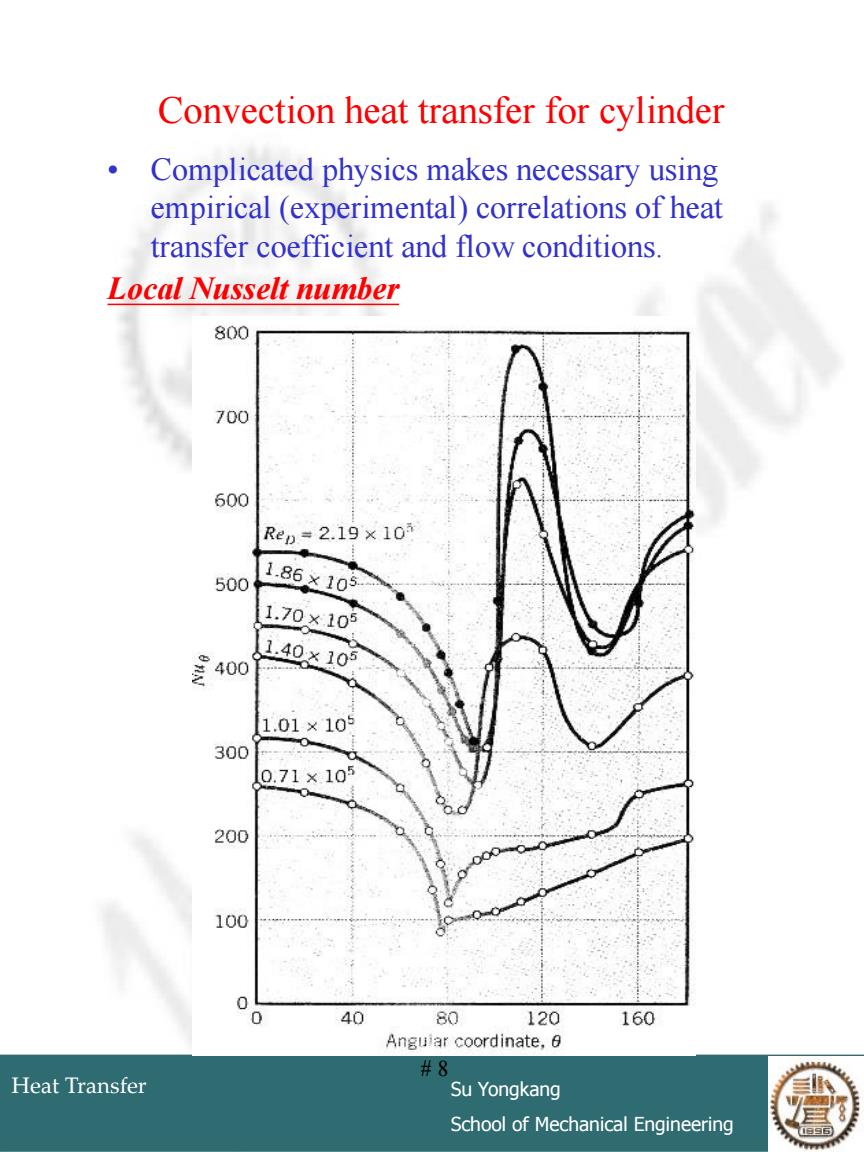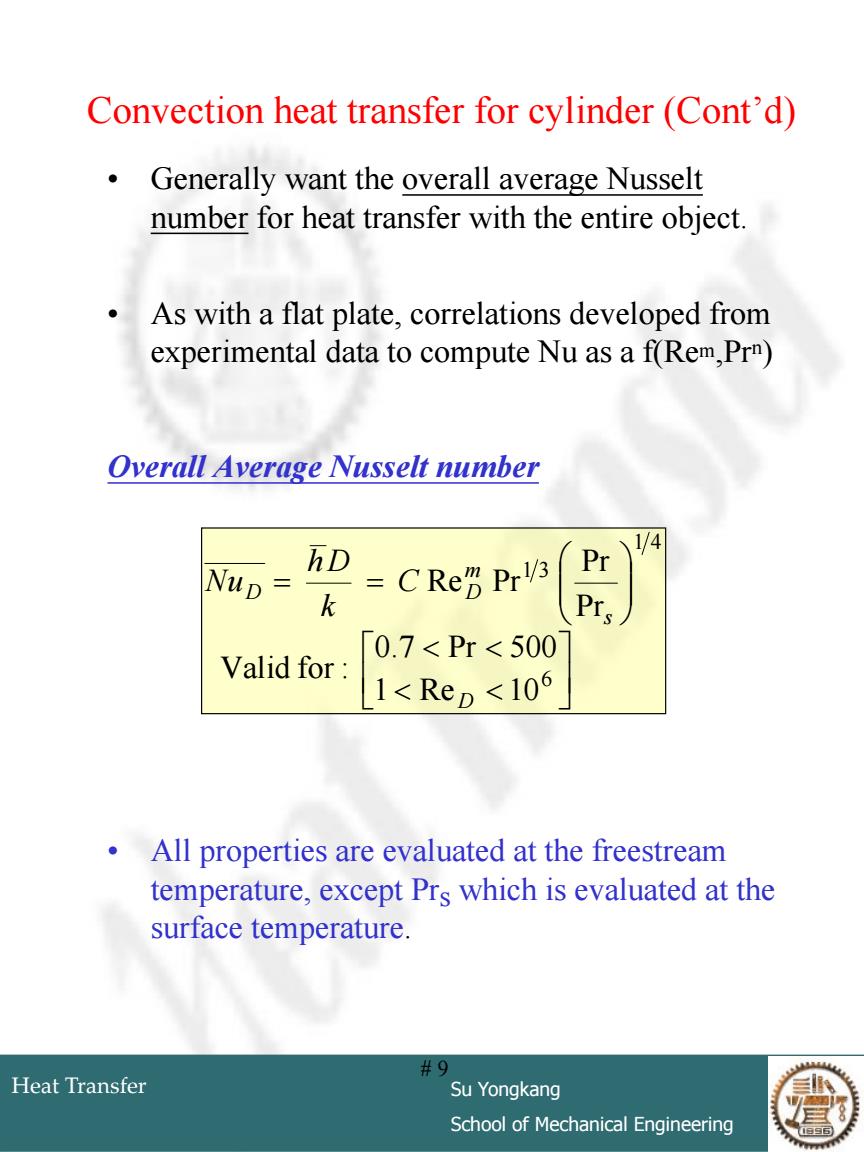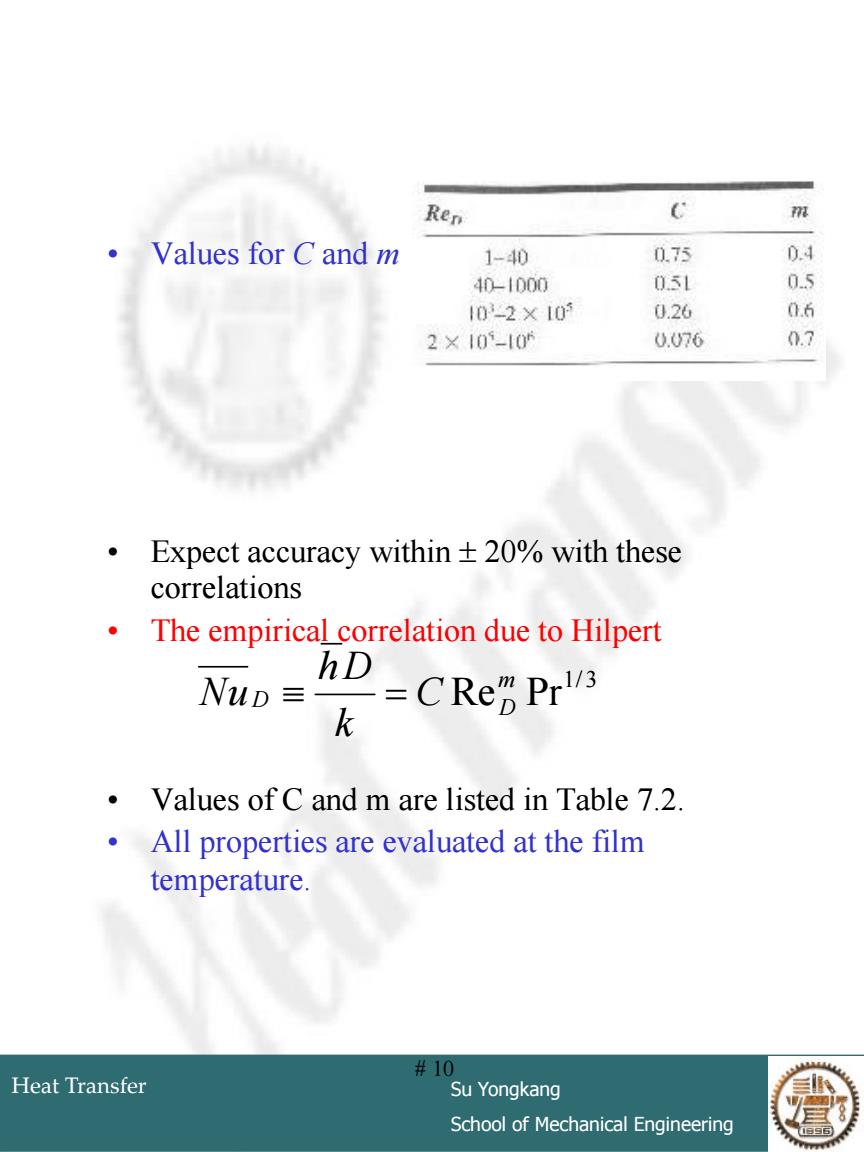
Background-Flow Considerations Wake Stagnation point Separation point Boundary layer Favorable Adverse pressure gradient pressure gradient aP <0 aP >0 Ox #6 Heat Transfer Su Yongkang School of Mechanical Engineering
Heat Transfer Su Yongkang School of Mechanical Engineering # 6 Background – Flow Considerations Favorable pressure gradient 0 x P Adverse pressure gradient 0 x P Stagnation point Separation point Wake

Background-Flow Considerations (Cont'd) Boundary layer transition Laminar Laminar Transition- Turbulent boundary boundary boundary layer layer layer V Ren≤2x105 Ren≥2×105 Separation Separation Momentum of fluid in a turbulent boundary layer is greater,and thus separation occurs further along the object. Example How fast must a soccer ball travel to expect a turbulent boundary layer? ReDV2×105×15.89×10-6 =14.4 m D 0.22 S But other factors also involved (surface roughness, wind,ball spin,etc.) #7 Heat Transfer Su Yongkang School of Mechanical Engineering
Heat Transfer Su Yongkang School of Mechanical Engineering # 7 Background – Flow Considerations (Cont’d) • Boundary layer transition • Momentum of fluid in a turbulent boundary layer is greater, and thus separation occurs further along the object. Example How fast must a soccer ball travel to expect a turbulent boundary layer? But other factors also involved (surface roughness, wind, ball spin, etc.) s m D V D 14.4 0.22 Re 2 10 15.89 10 5 6

Convection heat transfer for cylinder Complicated physics makes necessary using empirical (experimental)correlations of heat transfer coefficient and flow conditions. Local Nusselt number 800 700 600 Rep=2.19×10 500 1.86×105 1.70×105 星401 1.40×10 1.01×105 300 0.71×105 200 100 0 40 80 120 160 Anguiar coordinate,0 #8 Heat Transfer Su Yongkang School of Mechanical Engineering
Heat Transfer Su Yongkang School of Mechanical Engineering # 8 Convection heat transfer for cylinder • Complicated physics makes necessary using empirical (experimental) correlations of heat transfer coefficient and flow conditions. Local Nusselt number

Convection heat transfer for cylinder(Cont'd) Generally want the overall average Nusselt number for heat transfer with the entire object. As with a flat plate,correlations developed from experimental data to compute Nu as a f(Rem,Prm) Overall Average Nusselt number hD 1/4 Pr Nup k CRe PrV/3 二( Prs 「0.7<Pr<500 Valid for: 1<Rep <106 All properties are evaluated at the freestream temperature,except Prs which is evaluated at the surface temperature. #9 Heat Transfer Su Yongkang School of Mechanical Engineering
Heat Transfer Su Yongkang School of Mechanical Engineering # 9 Convection heat transfer for cylinder (Cont’d) • Generally want the overall average Nusselt number for heat transfer with the entire object. • As with a flat plate, correlations developed from experimental data to compute Nu as a f(Rem ,Pr n) Overall Average Nusselt number • All properties are evaluated at the freestream temperature, except Prs which is evaluated at the surface temperature. 6 1 4 1 3 1 Re 10 0.7 Pr 500 Valid for : Pr Pr Re Pr D s m D C D k hD Nu

Ren C m Values for C and m 1-40 0.75 0.4 40-1000 051 05 103-2×10° 0.26 0.6 2×10-10r 0.076 0.7 Expect accuracy within 20%with these correlations The empirical correlation due to Hilpert NuD≡ hD=CRepPr Values of C and m are listed in Table 7.2. All properties are evaluated at the film temperature #10 Heat Transfer Su Yongkang School of Mechanical Engineering
Heat Transfer Su Yongkang School of Mechanical Engineering # 10 • Values for C and m • Expect accuracy within 20% with these correlations • The empirical correlation due to Hilpert • Values of C and m are listed in Table 7.2. • All properties are evaluated at the film temperature. 1/3 Re Pr m D C D k hD Nu